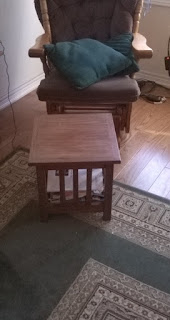Since I have been laying around waiting for my back to heal I have been drawing and painting a bit. I decided a while back that what I liked to do were watercolour washes and then add detail and crispness with pencil crayons. As with everything now days colouring with pencil crayons is not as simple as it was when we were kids. After checking out the pencils on the market I found these wood less ones that I like. the colour is good and they are cheap. After a while the card stock box in which the pencils lived fell apart, not a surprise, or disappointment, and I decided to make a wooden case for this set of colour pencils.
One advantage of having a wood working shop is you can make exactly the wooden box that you want. Since I have piles of off cuts and bits of wood I can make the box I want, from what I feel is the best wood for the job.
 |
| 6 1/4 by 5 1/4 by 1 1/4 inches |
I made the two side rails from cedar. I like it better than pine and I wanted the rails to be wide enough to nail into without making the box unnecessarily heavy. I chose to nail the box together because I am trying to show my grand kids that nails are okay for project construction. Gluing and clamping is a bit slow for 4 - 6 year old's and screws don't always suit the nature of the project. If Kieran can get comfortable with nails, he can complete more things while he is here.
The bottom is a thin strip of elm. I have lots of elm on hand and I like elm. Elm is tough and stingy and will provide a strong bottom even though it is thin.
After I burned the pattern onto the box I give it two coats of spray vanish and its done.
Here are two of the painting/drawings that I've done while laying around lately.
 |
| 4 x 6 one pencil crayon on mixed media paper |
 |
| 10 x 14 water colour paint and pencil crayon on 129 lb. cold pressed water colour paper
cheers, ianw
|

































